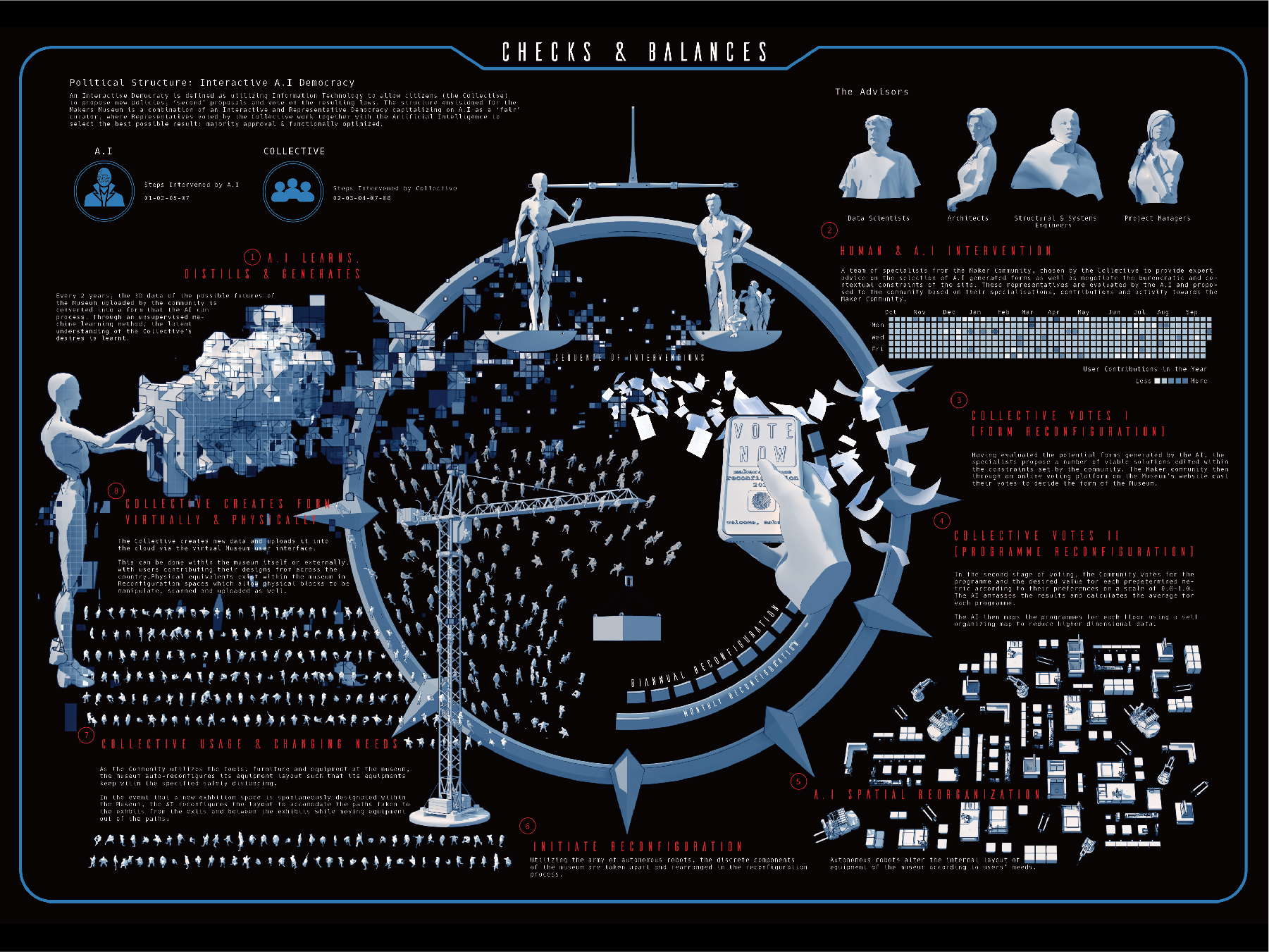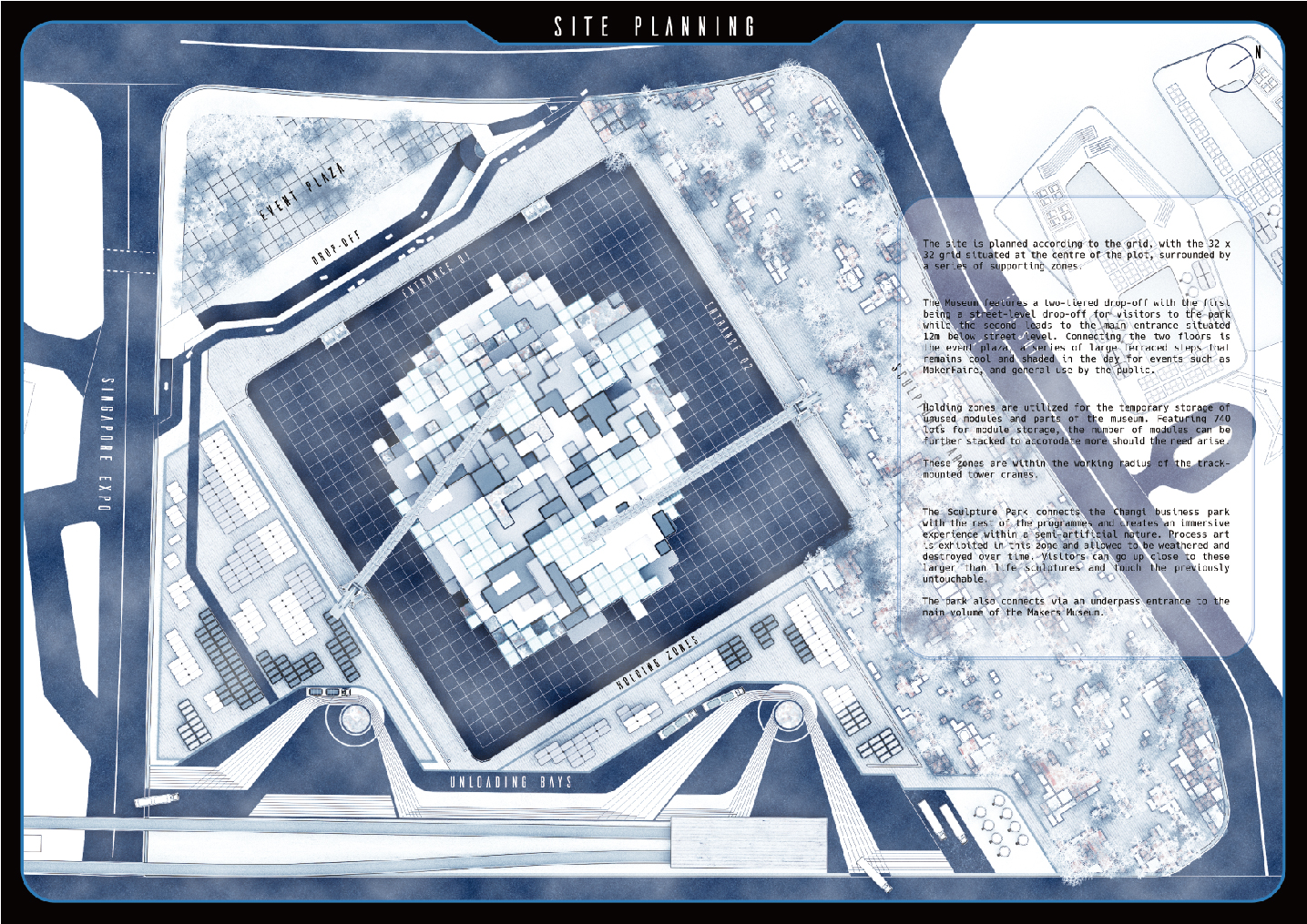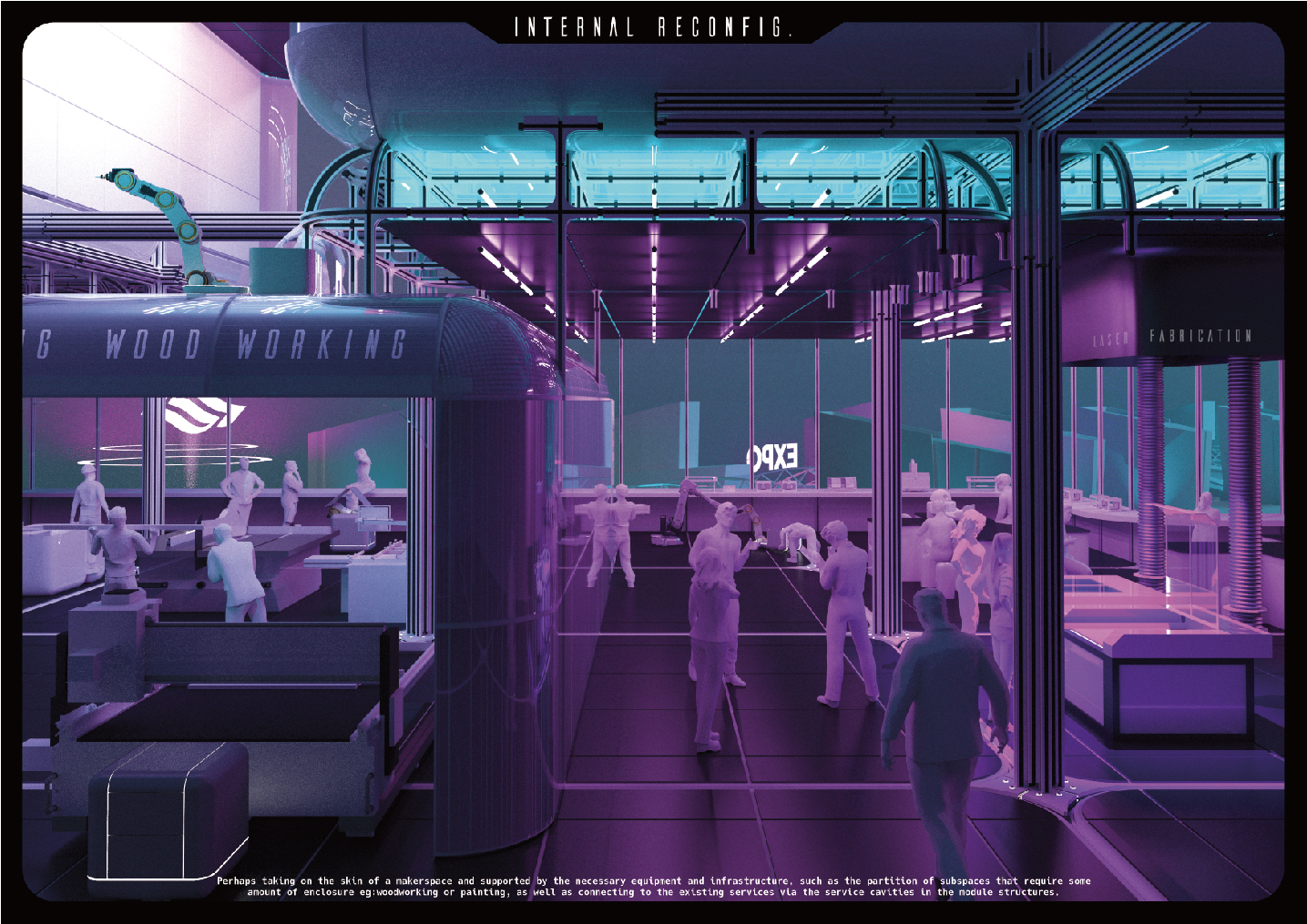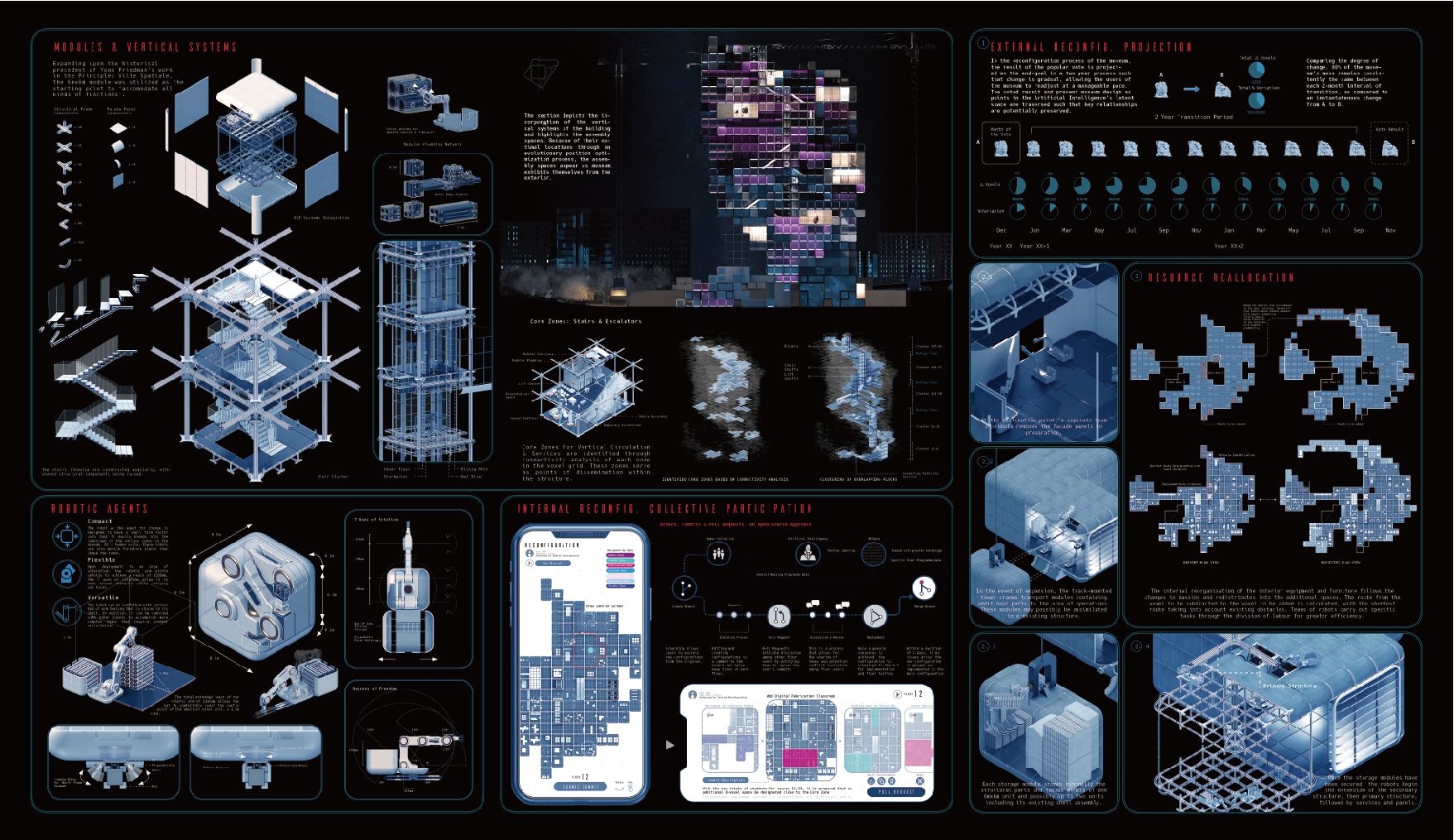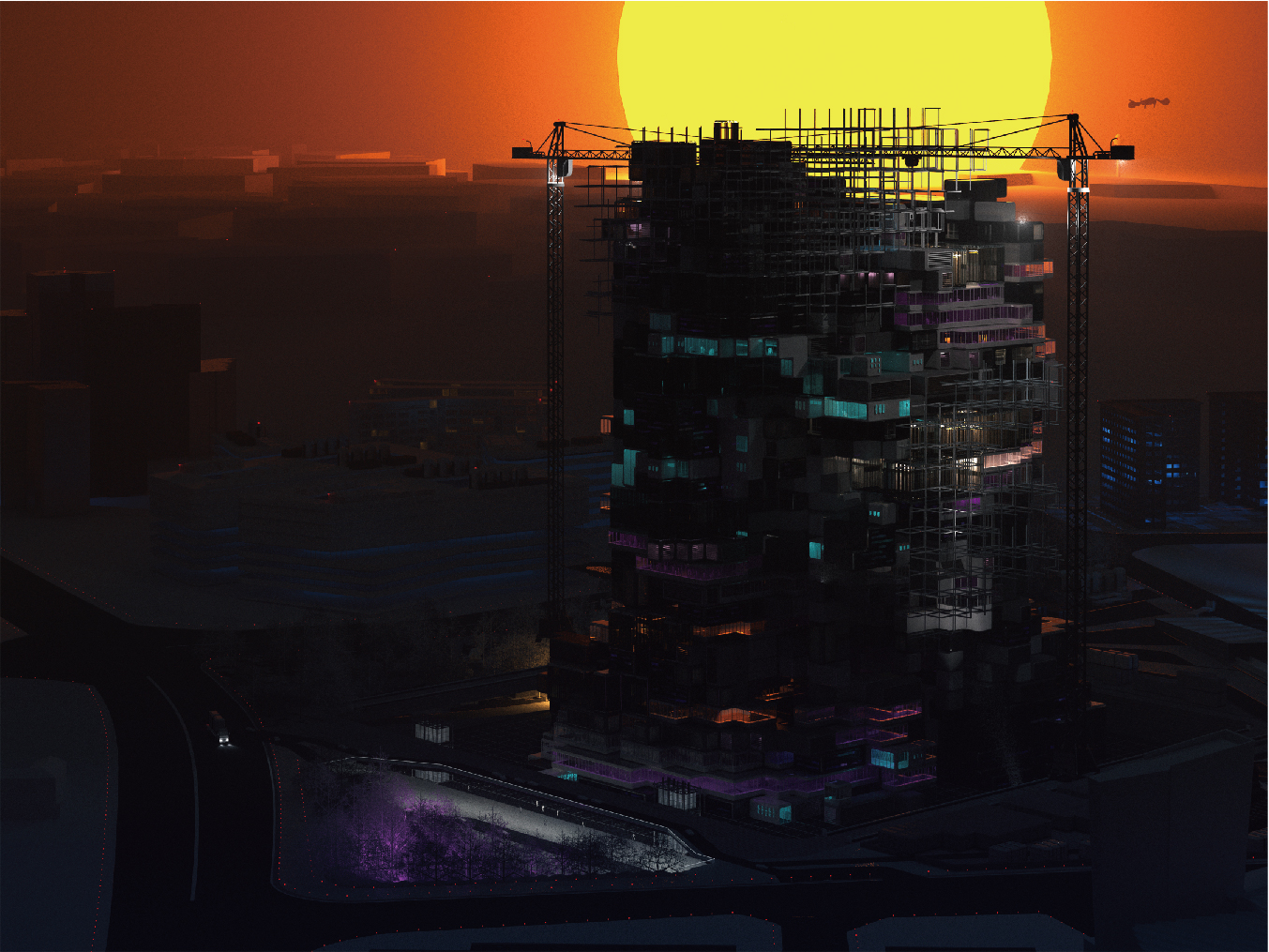The Makers Museum is an exploration in rethinking the typology of a museum as more than just a repository of artifacts and gallery spaces but also a space for the act of creation.
創客博物館是對博物館類型的探索與重新思考,試圖超越儲存展品與提供藝文空間的機能,使空間成爲創造的一部分。
Incorporating the use of Artificial Intelligence and working in tandem with Human stakeholders, the Museum is a product of Generative processes, Collective decisions and Specialist interventions.
博物館做爲一種結合了人工智慧與使用協作的產物,融合了生成過程、集群決策和專業知識的介入。
With the intention of the Museum’s architecture as zeitgeist, the Museum reconfigures itself over time to suit the needs and desires of the age, through a series of modular components.
該設計認爲創客博物館建築需要體現時代精神, 見證時間的變遷與需求的改變,並經由模組化的構件,博物館也隨之完成自身的重構。
This too is a sustainability strategy by removing the need to demolish and make way for the new, to expand when demand increases, or shrink in scale when demand falls significantly in an event such as a global pandemic, optimizing energy and resource consumption.
這也是一個可持續的策略,無需爲了興建而拆除,反而能在需求增長時擴張,或是爲了在全球疫情, 需求大幅下降而減小規模,優化能源和資源消耗。
The thesis seeks to pose the question: Can Artificial Intelligence allow for more democratic collective design processes? What are the systems that would support such an Architecture?
該畢業設計旨在檢視這樣的問題——人工智慧能否成爲一個更民主的集體設計過程?建築如何能介入系統提供支持?
The mechanisms of the museum can be divided into five distinct processes. Each process comprises sub-processes that facilitate the museum’s reconfiguration.
博物館的機制可以分爲五個不同的進程,每個進程都包含了子進程,使博物館得以重構。
Process Zero involves the collection of data from the Maker Collective. This is done via an application that serves as a platform made accessible to the community, by the community and for the community.
進程零用了來自“創客群體”的數據集。其實現由應用程式所完成,而該程式也作爲開放的社區平臺,服務于社區,由社區自主運營。
Process One includes the collation of data for machine learning; followed by 3D form generation and selection. As such user-generated data does not currently exist, data from Thingiverse, the world’s largest 3D file repository was used as a proxy for the research.
進程一包括了數據的機器學習(3D生成對抗神經網絡),繼而生成和選擇三維形體。由於此類用戶數據尚且不存在,作爲研究替代,該設計使用了Thingiverse數據——世界上最大的 3D 文件存儲庫。
Process Two is the exploration of mechanisms and systems that make a reconfigurable museum possible. It is also the translation of A.I generated forms to architectural space. These mechanisms include the application of a modular frame system, vertical circulation networks, and robotic systems.
過程二探索了博物館重構的機制與系統的可能性。它也是AI生成的形態到建築空間的轉譯。這些機制包括模組化框架系統、垂直動缐網絡,和機器人系統的應用。
Process Three involves the usage of the museum and depicts its site dependencies as well as internal mechanisms of reorganisation. The site at Changi is organized into zones that support the museums functions. Reorganisation of the internal spatial layout is via a user-driven process which builds community discussions and a sense of ownership.
進程三涉及博物館的使用,並構想了基地條件和重組的內部機制。 該設計選擇樟宜作為基地,基地的組織分區支持了博物館的機能。內部空間佈局的重構則是通過用戶驅動的過程來建立社區討論和主人翁意識的。
Process Four comprises the sequences executed in the reconfiguration of the museum. The projected form is the result of a collective decision via majority vote, selected from the A.I-Human generative process, and is the transition end-goal in a 2-year process.
進程四編譯了博物館重構的執行序列。從人機(AI)協作的生成結果中,通過集體的多數投票決議,並以兩年為週期,進行「過渡」的完成型態。
While the Makers Museum may seem like a speculative reality today, the various computational, architectural, and engineering technologies for the most part, already exist. The thesis thus explored the implementations of such technology in allowing for more inclusive design processes in the context of a reconfigurable museum; and the necessary supporting architectural and robotic systems, while seeking to redefine the Museum and the Makerspace.
雖然創客博物館在今天看起來像是一個對未來的猜測,但在絕大多數應用,包括各種計算、建築和工程技術已經存在。 因此,本論文探討了此類技術的實施,以便在可重構博物館的背景下實現更具包容性的設計過程; 以及必要的建築和機器人系統,同時尋求重新定義博物館和創客空間。
With greater advancements in technology, perhaps such a Museum, a product of Human and Artificial imagination, may just be on the edge of tomorrow.
隨著技術的更大進步,也許這樣一個人類和人工智慧的產物的博物館,可能就在唾手可及的明天。
